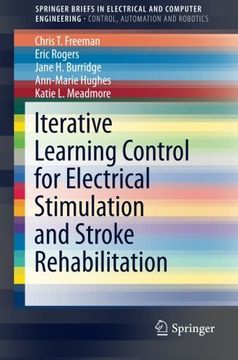Share
Iterative Learning Control for Electrical Stimulation and Stroke Rehabilitation (Springerbriefs in Electrical and Computer Engineering)
Chris T. Freeman; Eric Rogers; Jane H. Burridge (Author)
·
Springer
· Paperback
Iterative Learning Control for Electrical Stimulation and Stroke Rehabilitation (Springerbriefs in Electrical and Computer Engineering) - Chris T. Freeman; Eric Rogers; Jane H. Burridge
Choose the list to add your product or create one New List
✓ Product added successfully to the Wishlist.
Go to My Wishlists
Origin: U.S.A.
(Import costs included in the price)
It will be shipped from our warehouse between
Monday, May 27 and
Wednesday, June 12.
You will receive it anywhere in United Kingdom between 1 and 3 business days after shipment.
Synopsis "Iterative Learning Control for Electrical Stimulation and Stroke Rehabilitation (Springerbriefs in Electrical and Computer Engineering)"
Iterative learning control (ILC) has its origins in the control of processes that perform a task repetitively with a view to improving accuracy from trial to trial by using information from previous executions of the task. This brief shows how a classic application of this technique - trajectory following in robots - can be extended to neurological rehabilitation after stroke. Regaining upper limb movement is an important step in a return to independence after stroke, but the prognosis for such recovery has remained poor. Rehabilitation robotics provides the opportunity for repetitive task-oriented movement practice reflecting the importance of such intense practice demonstrated by conventional therapeutic research and motor learning theory. Until now this technique has not allowed feedback from one practice repetition to influence the next, also implicated as an important factor in therapy. The authors demonstrate how ILC can be used to adjust external functional electrical stimulation of patients' muscles while they are repeatedly performing a task in response to the known effects of stimulation in previous repetitions. As the motor nerves and muscles of the arm reaquire the ability to convert an intention to move into a motion of accurate trajectory, force and rapidity, initially intense external stimulation can now be scaled back progressively until the fullest possible independence of movement is achieved.
- 0% (0)
- 0% (0)
- 0% (0)
- 0% (0)
- 0% (0)
All books in our catalog are Original.
The book is written in English.
The binding of this edition is Paperback.
✓ Producto agregado correctamente al carro, Ir a Pagar.

